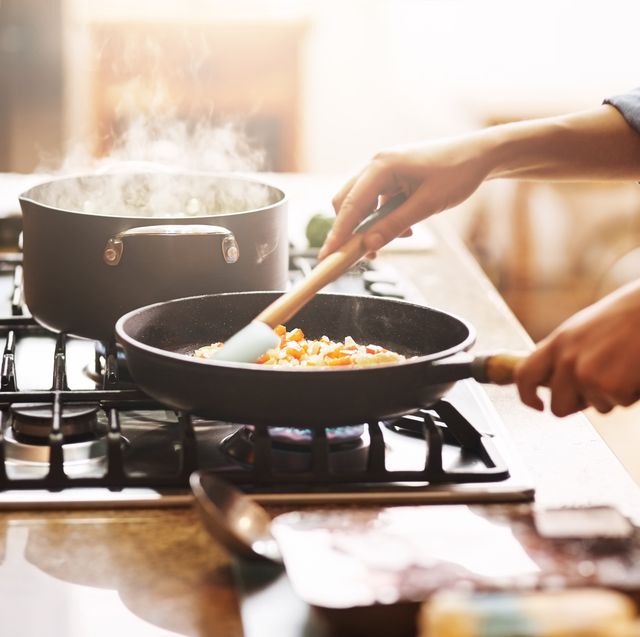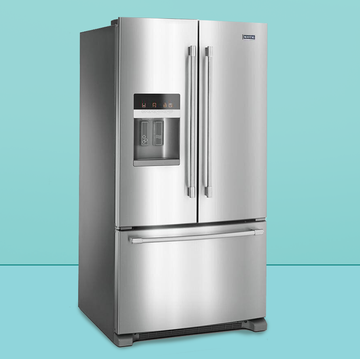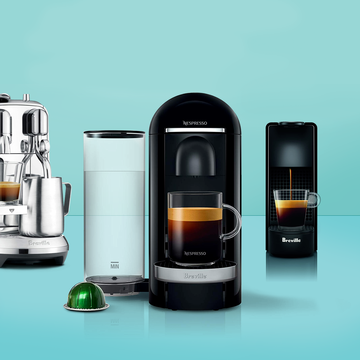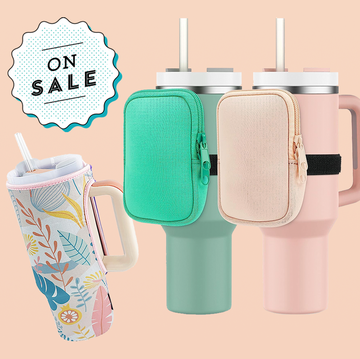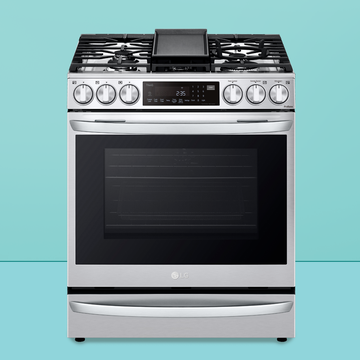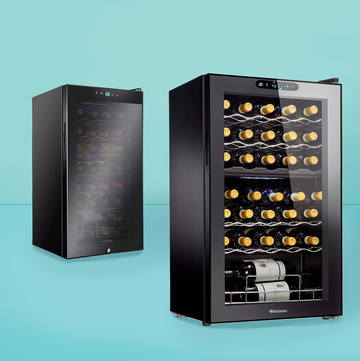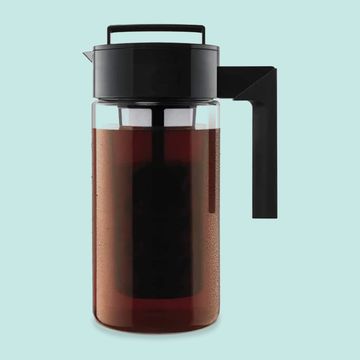Cookware sales amounted to $2.7 billion in 2021, and more than half of that — $1.8 billion — was nonstick cookware, according to The NPD Group. It makes sense, because nonstick cookware has several major advantages, like easy cleanup, less food sticking to the surface and the ability to cook with less oil or butter.
Still, many consumers have concerns about the safety of nonstick cookware and toxic chemical emissions. So we talked to numerous experts, looked at the major studies and conducted our own lab tests at the Good Housekeeping Institute to find out: Are nonstick pots and pans safe?
In a word, yes. As a blanket statement, nonstick pans are safe as long as they’re not overheated, says Nicole Papantoniou, director of the Kitchen Appliances and Culinary Innovations Lab at the Good Housekeeping Institute. She also recommends caring for them carefully and tossing them once they scratch or show signs of wear to avoid the possibility of particles landing in your food.
Cooking with damaged pans or not following the manufacturer's instructions for use can increase the risk of releasing toxic compounds in pans that were made with PFAS (per- and polyfluoroalkyl substances). If you use nonstick pans as intended, they will be safe. And not all nonstick cookware contains PFAS, which are the root of the health concerns; our ceramic nonstick pick, for example, is PFA-, PFOA-, cadmium-, and lead-free. But when nonstick cookware that is made with PFAS reaches temperatures over 500˚F, the coating can begin to break down at the molecular level. This breakdown can cause some particles and gasses (that have been linked to certain cancers) to be released.
What exactly is PFOA?
One large area of concern for consumers has been PFOA (perfluorooctanoic acid), a chemical used in the manufacturing of some nonstick cookware's coating, including Teflon (which is the brand name for polytetrafluoroethylene or PTFE). PFOA has been associated with tumors and developmental problems in animals, and experts raised concerns about its possible effects on humans. The good news is that it has not been made in the United States since 2015. However, it's still produced in other countries, and PFOA is very persistent in nature and past contaminations can still pose environmental health risks.
In 2004, DuPont agreed to pay up to $343 million to settle a lawsuit alleging that PFOA, used in the manufacture of Teflon at a certain plant, had contaminated drinking water nearby. In 2006, the EPA reached a stewardship program agreement with eight companies, including DuPont, to phase out the use of PFOA completely, hitting that 2015 cessation point.
But the link between Teflon and these cases has contributed to the lingering concerns. "There's a whole chemistry set of compounds that will come off when Teflon is heated high enough to decompose," said Robert L. Wolke, Ph.D., author of What Einstein Told His Cook: Kitchen Science Explained. "Many of these are fluorine-containing compounds, which as a class are generally toxic." But fluoropolymers, the chemicals from which these toxic compounds come, are a big part of the coating formula — and the very reason that foods don't stick to nonstick.
At very high temperatures — 660°F and above — pans may more significantly decompose, emitting fumes strong enough to cause polymer-fume fever, a temporary flu-like condition marked by chills, headache and fever. (The fumes won't kill you — but they can kill pet birds, whose respiratory systems are more fragile.)
At 680°F, Teflon releases at least six toxic gasses, including two carcinogens, according to a study by the Environmental Working Group, a nonprofit watchdog organization. "However, even if those gasses are formed, the odds that you're going to breathe enough of them to be sick are low," said Wolke, a point corroborated by several of the experts we interviewed.
How long does it take for a nonstick pan to overheat?
Because nonstick cookware is often used for delicate foods prone to sticking, like eggs or fish, the cooking won’t require temperatures over 500°F — and certainly not over 680°F. But if you wanted to sear a steak and finish it in the oven, would you be at risk?
The pros in the Good Housekeeping Institute wanted to find out how fast a nonstick pan can reach 500°F (the point at which its coating can start to decompose). We put three pieces of nonstick cookware to the test: a cheap, lightweight pan (weighing just 1 lb., 3 oz.); a midweight pan (2 lbs., 1 oz.); and a high-end, heavier pan (2 lbs., 9 oz.).
We cooked five dishes at different temperatures on a burner that's typical in most homes. Even we were surprised by the results: An empty lightweight pan over high heat exceeded 500˚F in less than 2 minutes; a heavyweight pan used to cook burgers blew past 575˚F in 8.5 minutes.
Safe for Nonstick:
- Scrambled eggs 218° F: Cooked on medium for 3 minutes in a lightweight pan
- Chicken & pepper stir-fry 318° F: Cooked on high for 5 1/4 minutes in a lightweight pan
- Bacon 465° F: Cooked on high for 5 1/2 minutes in a medium-weight pan
Risky for Nonstick:
- Empty pan, preheated 507° F: Heated on high for 1 3/4 minutes in a lightweight pan
- Pan preheated with 2 Tbsp. oil 514° F: Heated on high for 2 1/2 minutes in a lightweight pan
- Hamburgers 577° F: Cooked on high for 8 1/2 minutes in a heavyweight pan
- Steak 656° F: Cooked on high for 10 minutes in a lightweight pan
How to safely use nonstick cookware
You can safely cook with nonstick pots and pans as long as you follow some precautions. First and foremost, read the manufacturer’s directions, says Fran Groesbeck, managing director of The Cookware and Bakeware Alliance: “If you follow the use and care instructions, the product will be safe.”
In addition, be mindful of what you’re cooking. Any food that cooks quickly over low or medium heat (such as fish, grilled cheese or fried eggs) and any foods that coat most of the pan's surface (like scrambled eggs, pancakes or warmed-up leftovers), which brings down the pan's temperature, are unlikely to overheat your pan. And many other kinds of cooking are safe as well.
While our experts can’t recommend eating food cooked in a pan that has been overheated or improperly cared for, the FDA reports that for pans manufactured with PFAS, the coatings generally contain “a negligible amount of PFAS capable of migrating to food.” The agency states that nonstick cookware coating is an authorized use of PFAS in contact with food.
In our Lab tests, the only food prep that yielded a nonstick pan temperature exceeding 600ºF in less than 10 minutes was steak in a lightweight pan. But to be cautious, keep these tips in mind:
✔️ Never preheat an empty pan. In our tests, each of the three empty nonstick pans we heated on high reached temperatures above 500˚F in less than 5 minutes — and the cheapest, most lightweight pan got there in under 2 minutes. Even pans with oil in them can be problematic; our cheapest pan zoomed to more than 500˚F in 2.5 minutes.
✔️ Don't cook on high heat. Most manufacturers of nonstick cookware, including DuPont, now advise consumers not to go above medium. (DuPont maintains that Teflon does not pose any health risks and that its guideline is simply meant to maximize the life of the product.) To play it safe, set your knob to medium or low, and don't place your nonstick cookware over so-called power burners (anything above 12,000 BTUs on a gas stove or 2,400 watts on an electric range), because those burners are intended for tasks like boiling a large pot of water quickly.
✔️ Ventilate your kitchen. When cooking, turn on the exhaust fan to help clear away any fumes.
✔️ Don't broil or sear meats. Those techniques require temperatures above what nonstick can usually handle.
✔️ Choose a heavier nonstick pan. Lightweight pans generally heat up fastest, so invest in heavier-weight cookware. It's worth the extra money.
✔️ Consider ceramic coatings. Ceramic is a newer option in nonstick cookware that is a good choice if you want to avoid PFOA and PTFE. It’s naturally stick-resistant and can handle somewhat higher temperatures than conventional nonstick pans. “Ceramic is a great avenue for pans with color and design, and it resists staining,” says Groesbeck. “But it won’t last as long as PTFE and shouldn’t go in the dishwasher.” Another thing to note: Some ceramic coatings are made with PFAS so keep an eye out for that when shopping if that’s important to you.
✔️ Avoid chipping or damaging the pan. We've all been told not to use metal utensils on nonstick pans. Newer products may be harder to chip, "because the adhesion between the pan and the nonstick coating is better," says Paul Honigfort, Ph.D., a consumer safety officer with the Food and Drug Administration. But if pans do chip or flake, they may be more likely to release toxic compounds. To prevent scratching, use wooden or silicone tools to stir or flip food, avoid steel wool and don't stack the pans when storing. (If you do stack the pans, put a paper towel liner between them.) Some experts advise replacing your nonstick cookware every couple of years. If the pan is damaged, throw it out.
Sarah (she/her) is a deputy editor in the Good Housekeeping Institute, where she tests products and covers the best picks across kitchen, tech, health and food. She has been cooking professionally since 2017 and has tested kitchen appliances and gear for Family Circle as well as developed recipes and food content for Simply Recipes, Martha Stewart Omnimedia, Oxo and Food52. She holds a certificate in professional culinary arts from the International Culinary Center (now the Institute of Culinary Education).

Betty Gold is an experienced food writer and editor who worked at Good Housekeeping from 2013 to 2019. As the former Senior Editor & Product Analyst in the Kitchen Appliances Lab at the Good Housekeeping Institute, she tested and wrote about pretty much every type of cooking tool and food-related item on the market.
